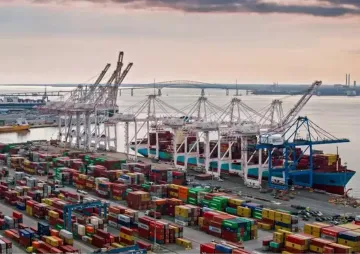Osama Bin Laden may have tried to duck technology, but it ultimately caught up with him. A fairly large house in a well-to-do suburb without connectivity? It was just a matter of time before the inevitable alarm bells rang. In 2011, it is absolutely foolish to not be connected to the internet, and in OBL's case it was downright lethal. (OBL is the acronym Bin Laden goes by on Twitter.) Just how connected are we?
For starters, the fact that OBL's neighbour, SohaibAthar, was live tweeting the raid, and in doing so, he outed the operation, is impressive: "Since taliban (probably) don't have helicopters, and since they're saying it was not 'ours', so must be a complicated situation." He wasn't alone. After a successful operation, Keith Urbahn, the chief of staff for the former Defense Secretary Donald Rumsfeld tweeted, "So I'm told by a reputable person they have killed Osama Bin Laden. Hot damn." This tweet went viral and in a short amount of time, thousands and even more thousands of people started logging on to Twitter, speculating and circulating whatever news they could find.
An online poll conducted by Mashable.com revealed that the majority of people were getting their information off social networking sites, with TV operating in the background. Ask anyone, and the answer will echo that sentiment.
Twitter went into electric overdrive (if that is even a phrase), and official estimates state that right after President Obama finished his remarks, there were 5,008 tweets per second. This means 300,480 opinions per minute. This is second only to the spike witnessed in the aftermath of the Japan tsunami, which peaked at 6,939 tweets per second.
It has been widely recognised that OBL's death has officially put Twitter's influence as a news source above the mainstream media's, with major journalists tweeting away as well.
Not to be left behind, Facebook has seen close to 500,000 people join a group called "Osama Bin Laden is DEAD". Taking advantage of this clear expression of interest, links to Osama's death video have been sent out by hackers via email and social networking sites in an effort to steal sensitive personal information or infect computers. The virus is so widespread that even the FBI has put out a statement cautioning against clicking on the links.
In India, OBL's death has brought up another controversial subject, Indo-Pak relations. Twitter lists out "trending topics" on the right side of the page that indicates the topics being discussed the most, and the group @Trendsmap India tabulates the results for India. Here, the conversation went somewhat like this: #osamadead, #abbottabad, #dawood, #kasab, #zardari, #bombers, #afzal, #assassination and so on. These topics make it very clear that unlike the US, which was more concerned about proof of Osama's death, and despite the large conspiracy theories floating online, Indians were primarily reflecting on their own war on terror. And this demographic has great untapped potential. Half of India's population is under 25, and 2/3 are under 40 years. In a figure released by AnttiOhrling of BLYK this week, a company that works in the sphere of mobile-based marketing, just over 50% of Indian youth accessed the internet in the past three months. Even if a healthy number of these use or begin to use Twitter as a way of expressing opinions, this will give traditional media a run for its money.
Social media's appeal has been widely discussed in the media. I think it has been best described by Patrick Ruffini, when he tweeted, "last night, the real time flow of text on a 3 inch display proved more compelling and addictive than the moving image." The thing about social media is that the narrative keeps shifting and adjusting according to new information and opinion that appears online. So, if someone were to ask, "how did they identify OBL's body?" it is only a matter of minutes before another person links to the New Scientist's article explaining how. The speed at which new information gets updated on social media, and the variety of sources it links back to, is unprecedented. That is why the computer/mobile screen has come to become a hotbed of interactivity that newspapers and televisions simply cannot compete with. And they don't need to since the phenomenon of "Social TV" has arrived.
This is when viewers watch the mainstream and report it on social networks, therefore connecting those who are on social networks with the mainstream. It is also the reason why most television channels and newspapers have a social media component, and why government and politicians are getting social media accounts. And what makes compelling reading is the mixture of news, opinion, jokes — "so OBL is dead... amazing what the Americans can do when they Playstation Network is down" — and personal anecdotes.
As for OBL, his death is historic for many reasons. But the unexpected one is that people went to Twitter first to talk about it. And even bigger, Twitter told them about it first.
http://www.sunday-guardian.com/investigation/obl-death-put-twitter-on-overdrive
The views expressed above belong to the author(s). ORF research and analyses now available on Telegram! Click here to access our curated content — blogs, longforms and interviews.

 PREV
PREV

